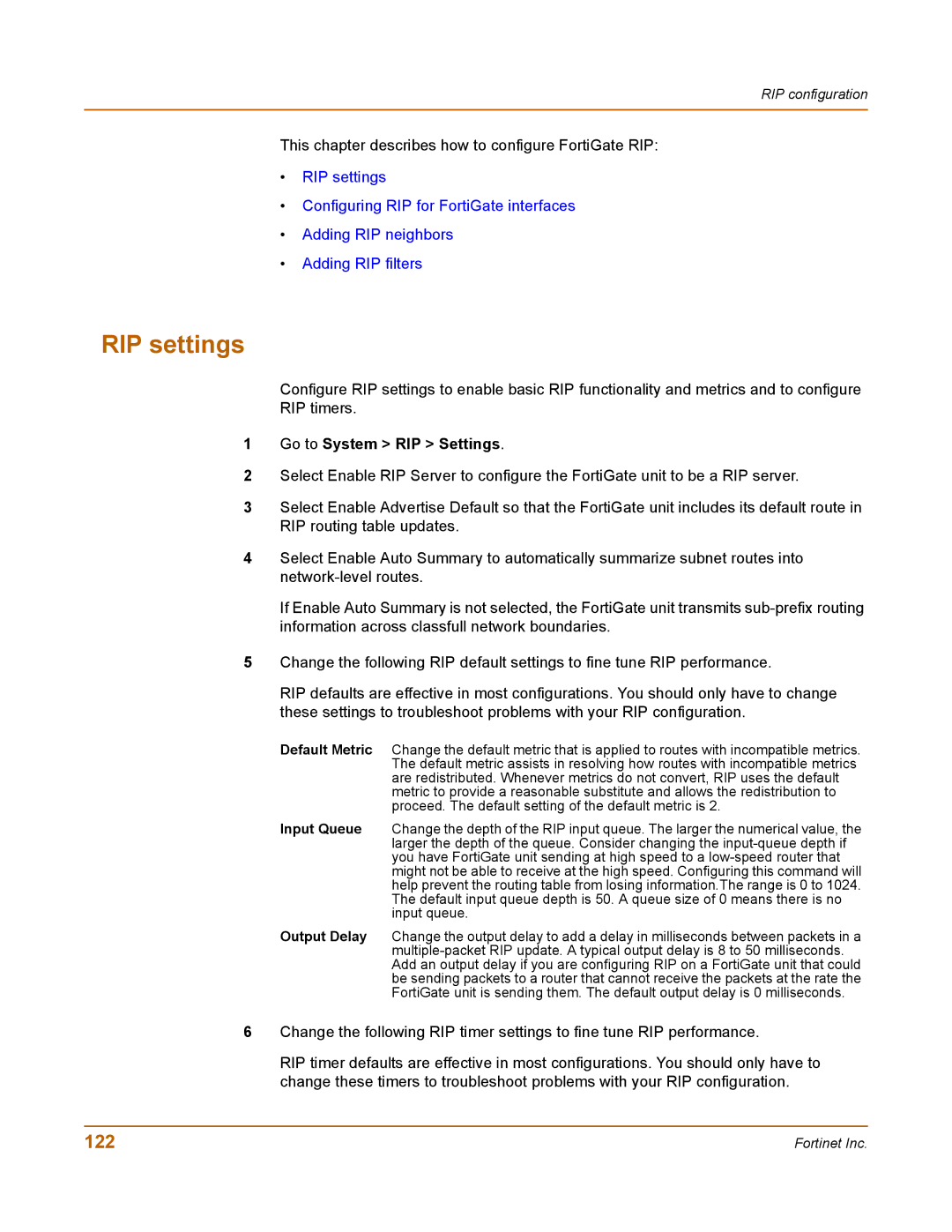
RIP configuration
This chapter describes how to configure FortiGate RIP:
•RIP settings
•Configuring RIP for FortiGate interfaces
•Adding RIP neighbors
•Adding RIP filters
RIP settings
Configure RIP settings to enable basic RIP functionality and metrics and to configure RIP timers.
1Go to System > RIP > Settings.
2Select Enable RIP Server to configure the FortiGate unit to be a RIP server.
3Select Enable Advertise Default so that the FortiGate unit includes its default route in RIP routing table updates.
4Select Enable Auto Summary to automatically summarize subnet routes into
If Enable Auto Summary is not selected, the FortiGate unit transmits
5Change the following RIP default settings to fine tune RIP performance.
RIP defaults are effective in most configurations. You should only have to change these settings to troubleshoot problems with your RIP configuration.
Default Metric Change the default metric that is applied to routes with incompatible metrics. The default metric assists in resolving how routes with incompatible metrics are redistributed. Whenever metrics do not convert, RIP uses the default metric to provide a reasonable substitute and allows the redistribution to proceed. The default setting of the default metric is 2.
Input Queue Change the depth of the RIP input queue. The larger the numerical value, the larger the depth of the queue. Consider changing the
Output Delay Change the output delay to add a delay in milliseconds between packets in a
6Change the following RIP timer settings to fine tune RIP performance.
RIP timer defaults are effective in most configurations. You should only have to change these timers to troubleshoot problems with your RIP configuration.
122 | Fortinet Inc. |
